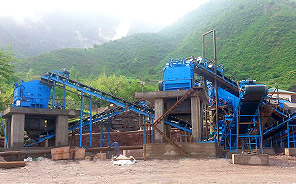A large basalt rock crusher is a heavy-duty machine designed to break down large chunks of basalt—a hard, dense volcanic rock—into smaller, manageable sizes for construction, road building, or aggregate production. Here’s what you need to know:
.jpg) Types of Large Basalt Crushers
Types of Large Basalt Crushers
1. Jaw Crusher (Primary Crushing)
– Best for initial breaking of large basalt blocks (up to 1.5m in size).
– High compressive strength capability (~320 MPa).
– Example: PE-1200×1500 Jaw Crusher (Capacity: 400–800 t/h).
2. Cone Crusher (Secondary Crushing)
– Ideal for medium-hardness rocks like basalt.
– Produces uniform, cubical-shaped output.
– Example: HPT300 Multi-Cylinder Hydraulic Cone Crusher (Capacity: 180–400 t/h).
3. Impact Crusher (Tertiary/Shape Crushing)
– Used for producing finer aggregates with good particle shape.
– Suitable for less abrasive basalt but wears faster than cone crushers.
4. Gyratory Crusher (Very Large-Scale Primary Crushing)
– Used in mining/quarrying for extremely high throughput (over 5,000 t/h).
Key Features for Basalt Crushing
– High Wear Resistance: Basalt is abrasive, so crushers need manganese steel or chrome alloy liners.
– Hydraulic Adjustment: For quick gap settings to control output size (e.g., 20–80mm).
– Dust Suppression: Basalt crushing generates dust; water spray or enclosed systems help.
 Recommended Capacity
Recommended Capacity
– For large-scale operations: 500–1,500 tons per hour (e.g., quarry supplying road base).
– Smaller projects: 200–500 t/h (e.g., concrete aggregate production).
Top Manufacturers
– Metso Outotec (Nordberg® HP Series cone crushers)
– Sandvik (CH800 Series gyratory/jaw crushers)
– Terex Minerals Processing Systems (Cedarapids MVPX Cone Crusher)
– Liming Heavy Industry (HST Hydraulic Cone Crusher)
Cost Estimate
– Large jaw





Leave a Reply